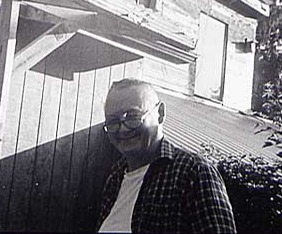
Jerry Pethick
Jerry Pethick was a Canadian artist who spent his life exploring the possibilities of perception and using space as a sculptural material. He worked with cutting-edge technology, particularly plastics and lenticular materials, from the mid-1960s, and established a holography school in San Francisco in 1971 with scientist Lloyd Cross. The school was the first to offer public workshops, and Pethick developed and patented the "sand table," a device that uses a bed of sand to match the technical demands of creating holograms.
In 1975, Pethick moved to Hornby Island, British Columbia, where he incorporated found objects into his sculpture, often sourced from the island's recycling depot. His illusory environments, characterized as "travelogues of environments," were created through innovative imaging approaches and generated a sense of protracted time. In his large-format array works, such as Volklingen Scarab (1995), Pethick created three-dimensional virtual images using a screen of Fresnel lenses arranged precisely over each image.
Pethick studied art in London, UK, at Chelsea Polytechnic and the Royal College of Art, and his work has been exhibited widely in Canada, the United States, and Europe. A major survey exhibition of his work was organized by the Vancouver Art Gallery in 2015, and he had solo exhibitions at various galleries including the Simon Fraser University Gallery, Burnaby, the Contemporary Art Gallery, Vancouver, and the Center on Contemporary Art, Seattle.
Years:
Born in 1935
Country:
Canada
Gallery: